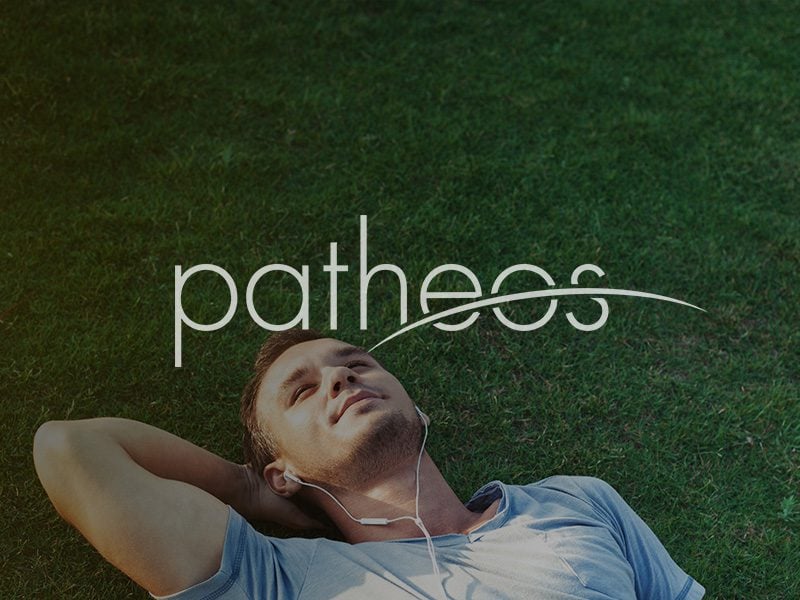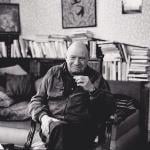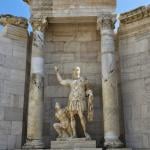Ruth Maclean, on the Lagos mega-church:
“Ha-lleluuuu-jah,” booms the distinctive voice of Pastor Enoch Adeboye, also known as the general overseer.
The sound comes out through thousands of loudspeakers planted in every corner of Redemption Camp. Market shoppers pause their haggling, and worshippers – some of whom have been sleeping on mats in this giant auditorium for days – stop brushing their teeth to join in the reply.
Hallelujah is the theme for this year’s Holy Ghost convention at one of Nigeria’s biggest megachurches, and all week the word echoes among the millions of people attending.
As evening falls on Friday, Adeboye, a church celebrity, is soon to take the stage at his vast new auditorium to give the convention’s last, three-hour sermon. Helicopters land next to the 3 sq km edifice, delivering Nigeria’s rich and powerful to what promises to be the night of the year.
Thousands of worshippers surge up the hill towards the gleaming warehouse. Shiny SUVs, shabby Toyota Corollas and packed yellow buses choke the expressway all the way from Lagos, 30 miles away.
But not everyone has to brave the traffic. Many of those making their way to the auditorium now live just around the corner. The Redeemed Christian Church of God’s international headquarters in Ogun state has been transformed from a mere megachurch to an entire neighbourhood, with departments anticipating its members’ every practical as well as spiritual need.
A 25-megawatt power plant with gas piped in from the Nigerian capital serves the 5,000 private homes on site, 500 of them built by the church’s construction company. New housing estates are springing up every few months where thick palm forests grew just a few years ago. Education is provided, from creche to university level. The Redemption Camp health centre has an emergency unit and a maternity ward.
On Holiness Avenue, a branch of Tantaliser’s fast food chain does a brisk trade. There is an on-site post office, a supermarket, a dozen banks, furniture makers and mechanics’ workshops. An aerodrome and a polytechnic are in the works.
And in case the children get bored, there is a funfair with a ferris wheel.
One thing we should surely learn from the Russian revolution is that resentment is always on the lookout for the theories that will justify it. And the lesson that bore in on me in vivid and unforgettable ways during my own journeys behind the Iron Curtain, is that resentment, when it finally takes power, spells the death of politics. The real purpose of politics is not to express resentment but to contain and conciliate it. When, in the wake of the Grenfell fire, leading political figures began calling for a ‘day of rage’, and for the requisitioning of bourgeois property, I heard again the voice of that old resentment. And I asked myself how could it be that the lesson has not been learned?
The problem is not a lack of literature. Invocations of communist terror abound, and include masterpieces that all educated people should know, such as Koestler’s Darkness at Noon, Pasternak’s Doctor Zhivago and Solzhenitsyn’s Gulag Archipelago. However, resentment easily overrides the evidence. Just as anti-Semitism has survived constant reminders of the Holocaust, so does the Marxist vision survive the accumulated testimony to its murderous legacy. Resentful people cherish their hatred more than they respect the rights of those who arouse it.
Depression doesn’t discriminate:
Ivanka Trump’s Instagram account is carefully curated with seemingly perfect photos of her three young children, but as viewers will find out on Dr. OzThursday, her experience as a mother has not been as effortless as she makes it appear.
“With each of my three children, I had some level of postpartum,” she told Oz in an excerpt shown Wednesday on ABC’s Good Morning America, though he had to prompt her to say the word “depression.”
There’s your proof that depression doesn’t discriminate: Not even Ivanka Trump, who possesses every advantage a working mother could have, is exempt from the mood disorder.
I like this by Greg Cootsona:
I was bottle-fed on the casual, happy secularism of the region we now known as Silicon Valley. I grew up not needing God, but being satisfied by superb weather, comfortable surroundings, and a sufficient degree of personal achievement. If I had a creed, it was functional atheism. To be clear, I was a buoyant secular Northern Californian, not some kind of dour atheistic postmodernist. To me — and many around me — an alleged Deity’s existence didn’t prove relevant or advantageous. Recently, the Barna Group found Oakland-San Francisco-San Jose to be the number one “unchurched” and “dechurched” region in the country, followed not far behind by Chico-Redding, where I live now (“Barna: Update”). My early self would today be counted as a None, and “Noneness” both continues to run through my veins and fill the cultural air I breathe.
At age seventeen, I started at U.C. Berkeley and shortly thereafter became a follower of Christ. I admit it — “Grow up in a secular home and go to Berkeley; then become a Christian” — is an almost laughable oxymoron. But that’s what happened. As a first-year student, I was dazed by this spectacular university and undone by my newfound collegiate license.
How did this happen? With a burgeoning undergraduate interest in the intellectual development of the West, and gradually training in Greek classics as well as Enlightenment literature and thought, I began to read the Bible. And I ran into this captivating figure, Jesus of Nazareth. (Admittedly, this search for God wasn’t purely intellectual — I’ve since learned that we don’t engage arguments in abstraction, we engage with people we respect.)
In the second quarter of my first year in this exquisitely secular college, without every answer clearly figured out, I committed my life to following Jesus. Even though now it’s been over three decades, it’s not hard for me to imagine the mindset of Nones. And though I started my life as a None and today I’m a Christian — which is the reverse of what many of our emerging adults face — the main thing I remember is that Nones seek for something to deny God’s existence — and for many science does as a satisfactory job. For example, one of my undergraduate students offered this comment after watching Richard Dawkins’s TED talk, “Militant Atheism,” “He brought up many points that I question or have questioned myself, and for this I would say I look up to Dawkins.”
Like many of us, I also heard at Cal that there’s no way to put together faith and science. Which reminds me of a dinner…. I had invited one of my favorite professors, a visiting scholar from Germany, Friederike Haussauer, to dine with my parents, who had come to visit from Menlo Park (about fifty miles south). As we were across from one another at Upstart and Crow Café on Bancroft Avenue, discussing various topics about Germany and the States (my mother’s side of the family is German so the motherland was a topic of common interest), Dr. Haussauer heard an incidental remark that I believed in God. She cut right to a confrontational question, “What possible sense does that make after modern science and the Enlightenment? How could you believe in God after Hume and Kant?” Frankly it shocked me — that challenge right in the middle of eating our quiches and hamburgers! (Germans, by their own admission are known for their candor.) I, not really thinking there was much conflict between my faith and these two Enlightenment philosophers, found myself still a bit stunned and had embarrassingly little to say. The conversation continued, and later we said our goodbyes. In her class on Enlightenment literature and thought, it wasn’t many weeks later that we read Voltaire, d’Alembert, the other philosophes, who joined their French voices to my professor’s: true intellectuals have rationally concluded that science presents decisive reasons for not believing in God.
It would be nice to report that this is unusual. Over the past few years, however, I’ve done interviews with dozens of students who had similarly experienced antagonism from other students and their profs. Andy (age 20) told me, “It is almost always a topic of science versus religion, rarely a topic of science and religion.” [HT: JS]
The English Reformation, not unlike the others, according to Peter Marshall:
Fierce fighting raged all day on 4 August 1549 in the fields and lanes outside the Devon village of Clyst St Mary. By evening, royal forces had driven the rebels from the streets, and taken the bridge over the river Clyst. But even in the moment of victory, the king’s commanders feared a counter-attack. The order was given for soldiers to kill any prisoner in their custody: perhaps 900 men were, in the words of a chronicler, “slain like beasts”.
This moment of shocking violence was an extreme but not anomalous occurrence in the course of England’s 16th-century Reformation. Recent scholarship on the changes taking place after Henry VIII’s break with the papacy tends to assert their relatively peaceful character, and points to continuities across the Reformation divide. Certainly, some important things didn’t change – most folk carried on worshipping in the same church, for example. It’s also true that England witnessed no slaughter on the scale of the German Peasants’ Rebellion of 1524–25 (when as many as 100,000 people were butchered), or the Wars of Religion breaking out in France after 1562 (in which as many as 4 million may have lost their lives).
But only by such selective comparisons does England’s experience of the Reformation look ‘peaceful’. Thousands died in the convulsions of 1549, and blood was spilled in encounters between armies fighting for religious causes in every decade between the 1530s and 1570s: after the Pilgrimage of Grace (a rising in the north of England against Henry VIII’s break with Rome in 1536–37); during Wyatt’s Rebellion (against Mary I in 1554); and in the Rising of the Northern Earls (a Catholic attempt to overthrow Elizabeth I in 1569–70). Over the same period and beyond, hundreds more were put to death for opposing the state’s religious policies. People were willing to die, and to kill, because they rightly believed that momentous, unprecedented, and perhaps irreversible transformations were taking place. For good or ill, England’s first exit from a European union, anchored on the church, rather than the Treaty of Rome, was a hard, not a soft one.
If you’re all about getting perks and flying elite status, you may want to be more selective on what airline you commit to, a new study finds. ThePointsGuy.com, a travel and lifestyle media platform, released its best domestic airline elite status report Tuesday, and found that Alaska Airlines (ALK) came out on top on three out of four categories beating out competitors United Airlines (UAL), Delta Airlines (DAL), American Airlines (AAL), JetBlue Airways (JBLU), and Southwest Airlines (LUV).
“It’s the only one of these major carriers that awards frequent flyer miles based on flying rather than spending. Someone who files 25,000 miles in a year on Alaska or select partners qualifies for Alaska’s lowest elite status tier (called Mileage Plan MVP). These MVP members enjoy a 50% bonus on miles, so a 25,000-mile flyer is gifted an additional 12,500, which values at $237.50,” ThePointsGuy.com said in a statement.
The overall ranking came out as follows:
1. Alaska Airlines
2. United Airlines
3. Delta Airlines
4. American Airlines
5. JetBlue Airlines
6. Southwest Airlines
INDIANA, Pa./CHILLICOTHE, Ohio (Reuters) – As deaths mount in America’s opioid crisis, communities on the front lines face a hidden toll: the financial cost.
Ross County, a largely rural region of 77,000 people an hour south of Columbus, Ohio, is wrestling with an explosion in opioid-related deaths – 44 last year compared to 19 in 2009. The drug addiction epidemic is shattering not just lives but also stressing the county budget.
About 75 percent of the 200 children placed into state care in the county have parents with opioid addictions, up from about 40 percent five years ago, local officials say. Their care is more expensive because they need specialist counseling, longer stays and therapy.
That has caused a near doubling in the county’s child services budget to almost $2.4 million from $1.3 million, said Doug Corcoran, a county commissioner.
For a county with a general fund of just $23 million, that is a big financial burden, Corcoran said. He and his colleagues are now exploring what they might cut to pay for the growing costs of the epidemic, such as youth programs and economic development schemes.
“There’s very little discretionary spending in our budget to cut. It’s really tough,” Corcoran said.
Cities, towns and counties across the United States are struggling to deal with the financial costs of a drug addiction epidemic that killed 33,000 people in 2015 alone, data and interviews with more than two dozen local officials and county budget professionals shows. (For graphics on the opioid crisis click here: tmsnrt.rs/2hO4YC7)











